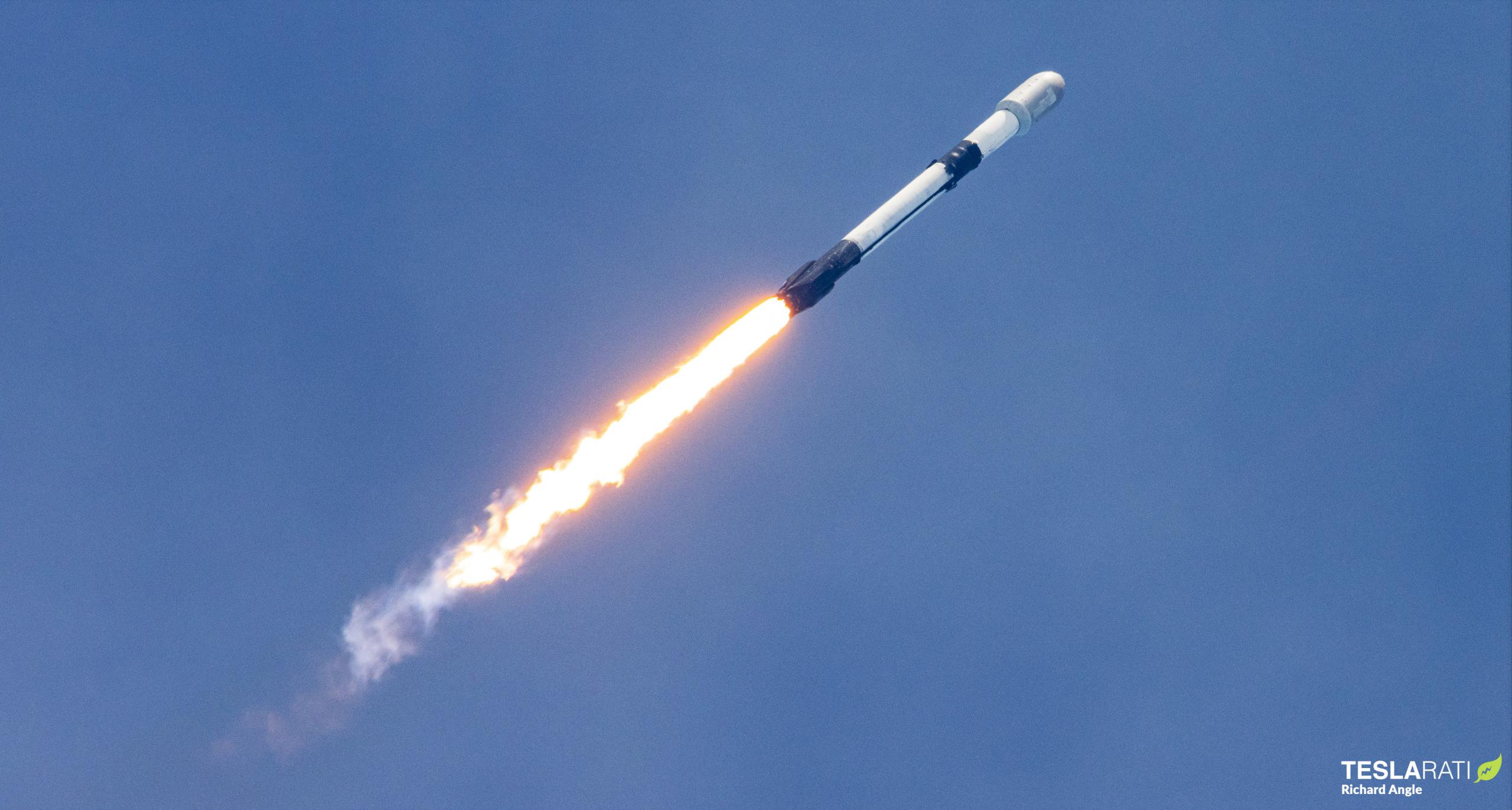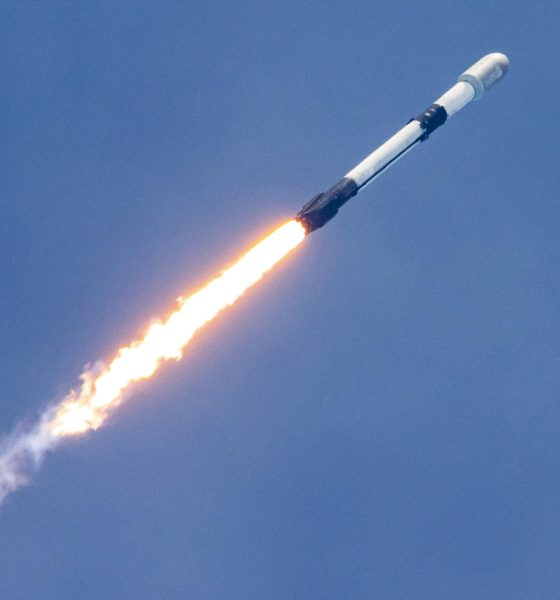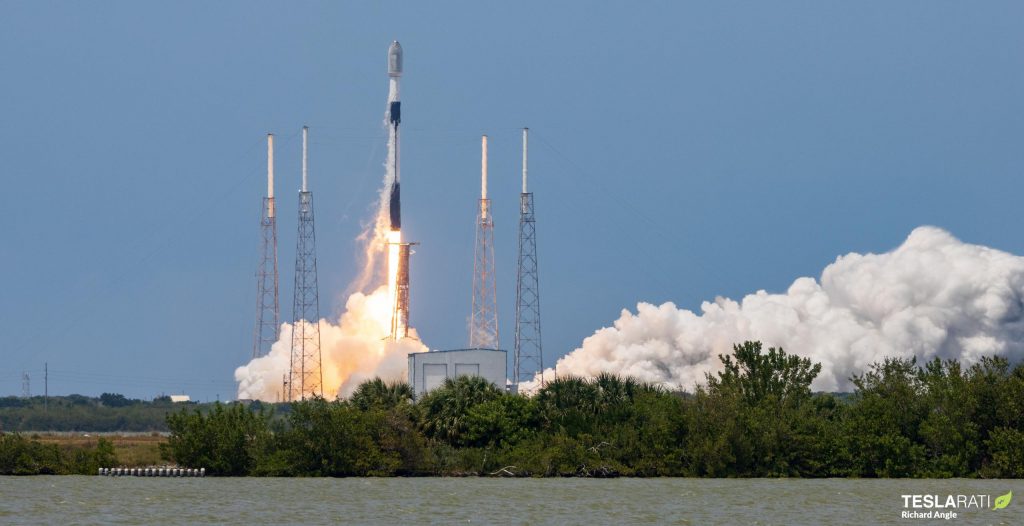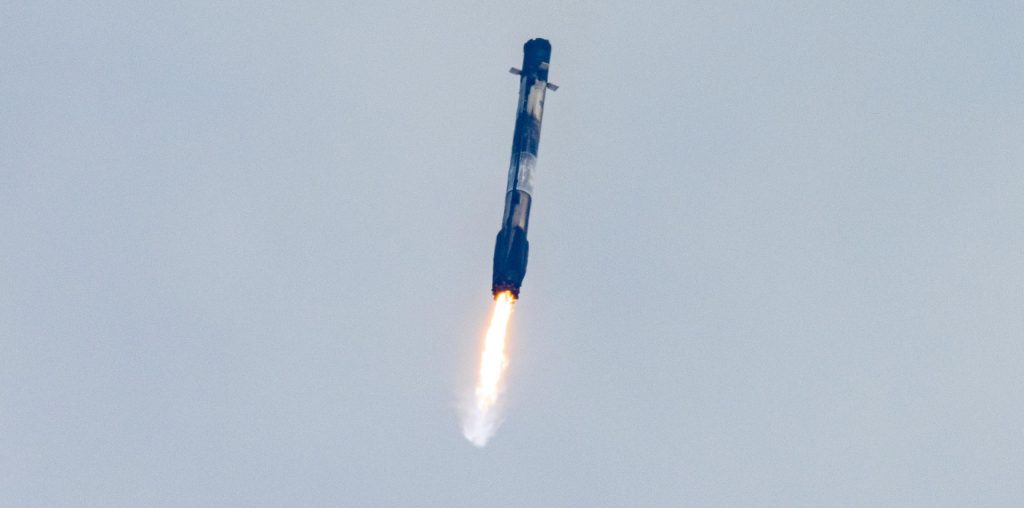

News
SpaceX delivers 59 spacecraft to orbit on fifth flawless rideshare launch
Update: After a slight eight-minute delay, SpaceX has successfully launched its fifth dedicated ‘Transporter’ rideshare mission, carrying 59 different spacecraft into a sun-synchronous orbit (SSO).
Following the Falcon 9 upper stage’s initial deployment of 39 different spacecraft, two of the deployed spacecraft will deploy another 20 or so small satellites over the next several weeks. Around an hour and a half after liftoff, SpaceX finally announced that the final Transporter-5 payload deployment was complete, confirming that the mission was a total success.
Falcon 9 booster B1061 performed as expected, acing its second Transporter launch in a row and eighth launch and landing overall since November 2020. Transporter-5 was SpaceX’s fifth launch this month and 22nd launch this year, representing an average of one launch every 6.5 days since the start of 2022. If SpaceX is able to complete four launches in June, it will be exactly half of the way to achieving 52 launches – an average of one launch per week – in a single calendar year.


SpaceX appears to be on track to launch its fifth dedicated Falcon 9 rideshare mission as early as 2:27 pm EDT (18:27 UTC) on Wednesday, May 25th, carrying a wide variety of interesting payloads into Earth orbit.
SpaceX has reportedly assigned Falcon 9 B1061 to the mission and Transporter-5 will be its eight launch and landing attempt since November 2020 and third launch this year. While of no particular consequence, B1061 will also become the first Falcon 9 booster to launch two Transporter missions back to back after supporting Transporter-4 less than two months ago. Falcon 9 is scheduled to lift off from SpaceX’s Cape Canaveral Space Force Station (CCSFS) LC-40 facilities and boost the Transporter-5 payload and upper stage most of the way out of the atmosphere, while the booster will return back to the Florida coast to land on a concrete pad just a few miles to the south.
Like Transporter-4, which launched with just 40 deployable payloads on April 1st, Transporter-5 appears to be another very small rideshare mission relative to SpaceX’s first three Transporter launches, demonstrating the company’s continued commitment to operating the service a bit like public transit. A public bus will still happily carry just a single passenger – efficiency, while important, comes second to dependability. For many of SpaceX’s individual Smallsat Program customers, that may help to alleviate some of the downsides of massive multi-dozen-satellite rideshares, which can often make individual customers feel forgotten and unimportant when they’re forced to swallow delays caused by payloads other than their own.


Based on official information provided by SpaceX on May 24th, Falcon 9 is scheduled to deploy only 39 payloads during Transporter-5. However, the real number of satellites deployed during the mission will likely be a bit higher due to the presence of three or four different vehicles that are designed to host or carry some of those payloads to different orbits. Spaceflight’s ‘Sherpa-AC1’ won’t have significant propulsion but it will carry several hosted payloads (‘hosted’ in the sense that the payload is not a free-flying satellite of its own) after deploying from Falcon 9.
The other two or three are true orbital transfer vehicles (OTVs), meaning that they have some kind of propulsion and are designed to deploy smaller satellites in customized orbits. The ultimate goal of the many startups trying to develop high-performance OTVs is to extract the best of both worlds from large rideshare missions and small rockets, combining ultra-cheap prices and orbits that are heavily optimized for each payload. Transporter-5 may carry Exolaunch’s “Reliant” OTV (unconfirmed) but is definitively scheduled to launch with D-Orbit’s “ION SCV-006” OTV and startup Momentus Space’s first ‘Vigoride’ OTV. Vigoride carries the unique distinction of being propelled by a first-of-its-kind “microwave electrothermal thruster” that turns water into a superheated plasma propellant.
Vigoride’s first true launch will be treated mainly as a test flight but it will also carry up to eight different small satellites. D-Orbit’s ION OTV only has one confirmed satellite on its manifest but will likely launch with at least a few more. All told, the number of satellites deployed as a result of Transporter-5 will likely be closer to 50 – a decent improvement over Transporter-4.
Several of those 50 or so payloads are particularly intriguing. Momentus Space’s first Vigoride OTV, if successful, could pave the way for the most capable commercial space tug currently available, with up to 2000 meters per second of delta V (dV) – a way to measure the stamina of rocket propulsion. NASA has also manifested its small Terabyte InfraRed Delivery (TBIRD) technology demonstrater satellite on Transporter-5 and will attempt to prove that it’s possible to use small, high-power lasers as extremely high-bandwidth downlinks. NASA hopes the tiny satellite will be able to transmit at up to 200 gigabits per second (Gbps), allowing it to downlink terabytes of data during a single pass over an Earth-based ground station.
AISTECH Space will launch an Earth observation satellite prototype outfitted with a first-of-its-kind high-resolution thermal imager. Last but certainly not least, Nanoracks and Maxar are scheduled to launch the first of multiple planned demonstrations and technology maturation missions for in-space manufacturing and construction technologies. The hosted payload is relatively simple by many measures and will only operate for about an hour, but it aims to demonstrate the first structural metal cutting in space.
Parent company Voyager Space ultimately wants to use the expertise it gains from the ‘Outpost Program’ to convert expended rocket upper stages into orbital ‘Outposts’ that will host customer payloads and support the continued development of in-space harvesting, recycling, construction, and more.
As of 5 am EDT (09:00 UTC), SpaceX still hasn’t officially confirmed via Tweet or website update that Transporter-5 is ‘go’ for launch. If it is, an official webcast available here will likely begin around 2:10 pm EDT (18:10 UTC).

News
Tesla aims to combat common Full Self-Driving problem with new patent
Tesla writes in the patent that its autonomous and semi-autonomous vehicles are heavily reliant on camera systems to navigate and interact with their environment.

Tesla is aiming to combat a common Full Self-Driving problem with a new patent.
One issue with Tesla’s vision-based approach is that sunlight glare can become a troublesome element of everyday travel. Full Self-Driving is certainly an amazing technology, but there are still things Tesla is aiming to figure out with its development.
Unfortunately, it is extremely difficult to get around this issue, and even humans need ways to combat it when they’re driving, as we commonly use sunglasses or sun visors to give us better visibility.
Cameras obviously do not have these ways to fight sunglare, but a new patent Tesla recently had published aims to fight this through a “glare shield.”
Tesla writes in the patent that its autonomous and semi-autonomous vehicles are heavily reliant on camera systems to navigate and interact with their environment.

The ability to see surroundings is crucial for accurate performance, and glare is one element of interference that has yet to be confronted.
Tesla described the patent, which will utilize “a textured surface composed of an array of micro-cones, or cone-shaped formations, which serve to scatter incident light in various directions, thereby reducing glare and improving camera vision.”

The patent was first spotted by Not a Tesla App.
The design of the micro-cones is the first element of the puzzle to fight the excess glare. The patent says they are “optimized in size, angle, and orientation to minimize Total Hemispherical Reflectance (THR) and reflection penalty, enhancing the camera’s ability to accurately interpret visual data.”
Additionally, there is an electromechanical system for dynamic orientation adjustment, which will allow the micro-cones to move based on the angle of external light sources.
This is not the only thing Tesla is mulling to resolve issues with sunlight glare, as it has also worked on two other ways to combat the problem. One thing the company has discussed is a direct photon count.
CEO Elon Musk said during the Q2 Earnings Call:
“We use an approach which is direct photon count. When you see a processed image, so the image that goes from the sort of photon counter — the silicon photon counter — that then goes through a digital signal processor or image signal processor, that’s normally what happens. And then the image that you see looks all washed out, because if you point the camera at the sun, the post-processing of the photon counting washes things out.”
Future Hardware iterations, like Hardware 5 and Hardware 6, could also integrate better solutions for the sunglare issue, such as neutral density filters or heated lenses, aiming to solve glare more effectively.
Elon Musk
Delaware Supreme Court reinstates Elon Musk’s 2018 Tesla CEO pay package
The unanimous decision criticized the prior total rescission as “improper and inequitable,” arguing that it left Musk uncompensated for six years of transformative leadership at Tesla.

The Delaware Supreme Court has overturned a lower court ruling, reinstating Elon Musk’s 2018 compensation package originally valued at $56 billion but now worth approximately $139 billion due to Tesla’s soaring stock price.
The unanimous decision criticized the prior total rescission as “improper and inequitable,” arguing that it left Musk uncompensated for six years of transformative leadership at Tesla. Musk quickly celebrated the outcome on X, stating that he felt “vindicated.” He also shared his gratitude to TSLA shareholders.
Delaware Supreme Court makes a decision
In a 49-page ruling Friday, the Delaware Supreme Court reversed Chancellor Kathaleen McCormick’s 2024 decision that voided the 2018 package over alleged board conflicts and inadequate shareholder disclosures. The high court acknowledged varying views on liability but agreed rescission was excessive, stating it “leaves Musk uncompensated for his time and efforts over a period of six years.”
The 2018 plan granted Musk options on about 304 million shares upon hitting aggressive milestones, all of which were achieved ahead of time. Shareholders overwhelmingly approved it initially in 2018 and ratified it once again in 2024 after the Delaware lower court struck it down. The case against Musk’s 2018 pay package was filed by plaintiff Richard Tornetta, who held just nine shares when the compensation plan was approved.
A hard-fought victory
As noted in a Reuters report, Tesla’s win avoids a potential $26 billion earnings hit from replacing the award at current prices. Tesla, now Texas-incorporated, had hedged with interim plans, including a November 2025 shareholder-approved package potentially worth $878 billion tied to Robotaxi and Optimus goals and other extremely aggressive operational milestones.
The saga surrounding Elon Musk’s 2018 pay package ultimately damaged Delaware’s corporate appeal, prompting a number of high-profile firms, such as Dropbox, Roblox, Trade Desk, and Coinbase, to follow Tesla’s exodus out of the state. What added more fuel to the issue was the fact that Tornetta’s legal team, following the lower court’s 2024 decision, demanded a fee request of more than $5.1 billion worth of TSLA stock, which was equal to an hourly rate of over $200,000.
Delaware Supreme Court Elon Musk 2018 Pay Package by Simon Alvarez
News
Tesla Cybercab tests are going on overdrive with production-ready units
Tesla is ramping its real-world tests of the Cybercab, with multiple sightings of the vehicle being reported across social media this week.

Tesla is ramping its real-world tests of the Cybercab, with multiple sightings of the autonomous two-seater being reported across social media this week. Based on videos of the vehicle that have been shared online, it appears that Cybercab tests are underway across multiple states.
Recent Cybercab sightings
Reports of Cybercab tests have ramped this week, with a vehicle that looked like a production-ready prototype being spotted at Apple’s Visitor Center in California. The vehicle in this sighting was interesting as it was equipped with a steering wheel. The vehicle also featured some changes to the design of its brake lights.
The Cybercab was also filmed testing at the Fremont factory’s test track, which also seemed to involve a vehicle that looked production-ready. This also seemed to be the case for a Cybercab that was spotted in Austin, Texas, which happened to be undergoing real-world tests. Overall, these sightings suggest that Cybercab testing is fully underway, and the vehicle is really moving towards production.
Production design all but finalized?
Recently, a near-production-ready Cybercab was showcased at Tesla’s Santana Row showroom in San Jose. The vehicle was equipped with frameless windows, dual windshield wipers, powered butterfly door struts, an extended front splitter, an updated lightbar, new wheel covers, and a license plate bracket. Interior updates include redesigned dash/door panels, refined seats with center cupholders, updated carpet, and what appeared to be improved legroom.
There seems to be a pretty good chance that the Cybercab’s design has been all but finalized, at least considering Elon Musk’s comments at the 2025 Annual Shareholder Meeting. During the event, Musk confirmed that the vehicle will enter production around April 2026, and its production targets will be quite ambitious.








